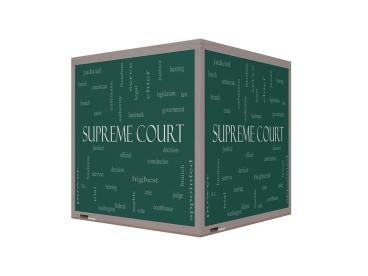After years of litigation, including two trips to the U.S. Supreme Court, on whether service advisors who work in an automobile dealership are exempt from overtime under the Fair Labor Standards Act (FLSA), the Court finally has held, in a 5-4 decision, that service advisors are exempt from overtime under the “automobile dealer” exemption applicable to salesmen, partsmen, and mechanics. Encino Motorcars, LLC v. Navarro, 2018 U.S. LEXIS 2065 (Apr. 2, 2018). But the case has implications far beyond the industry-specific exemption.
The Court has finally put to rest the “narrow construction” principle, long a thorn in the side of employers litigating FLSA exemption cases. Under this oft-stated principle, exemptions were “narrowly construed” against the employer due to the FLSA’s status as a “remedial” statute. This canon put a thumb on the scale in favor of employees in exemption cases and is cited routinely in cases involving application of an FLSA exemption. The Supreme Court now squarely rejects this principle, lifting the thumb off the scale and noting that exemptions are just as much a part of the FLSA as is the overtime requirement.
A Brief History of the Automobile Dealer Exemption
First enacted in 1966, FLSA section 213(b)(10)(A), commonly known as the “automobile dealer” exemption, excepts from overtime “any salesman, partsman, or mechanic primarily engaged in selling or servicing automobiles.” Shortly after the exemption’s enactment, the Department of Labor (DOL) issued a regulation providing that service advisers were not covered by the exemption and therefore were eligible for overtime. Following contrary holdings by the U.S. Court of Appeals for the Fifth Circuit and a number of district courts, the DOL in 1978 abandoned that position in an opinion letter and stated service advisors are covered by the exemption. This remained the position of both the DOL and the courts for more than three decades.
However, in 2011, the Obama-era DOL reversed course, issuing a final rule stating that service advisors are not covered by the exemption. Notwithstanding that the final rule provided no clear basis for the DOL’s reversal, when first faced with the issue in 2015, the U.S. Court of Appeals for the Ninth Circuit deferred to the final rule and held that service advisors were not exempt.
In 2016, the Supreme Court reversed the Ninth Circuit’s decision, concluding that the Ninth Circuit erred in deferring to the DOL regulation because the Department had not provided a sufficient basis for its sudden reversal of position. However, rather than deciding the service advisor exemption issue on its merits, the High Court remanded the case to the Court of Appeals to reconsider the issue absent reference to the now-voided regulation. (With only eight members at the time following the death of Justice Antonin Scalia, the Court likely was split 4-4 on the merits, as evidence by this week’s decision.) On remand, the Ninth Circuit again concluded that service advisors were not exempt, this time based on an examination of the statutory text and legislative history of the exemption.
“Disjunctive” vs. “Distributive”: A Supreme Parsing of the Automobile Dealer Exemption
As demonstrated by the divergent views taken by the Court’s majority and dissenting opinions, the wording of the automobile dealer exemption can be construed in different ways. When interpreting “any salesman, partsman, or mechanic primarily engaged in selling or servicing automobiles,” how, if at all, do the three types of jobs match up with the two listed primary tasks?
In reversing the Ninth Circuit for the second time, the Supreme Court, in an opinion authored by Justice Clarence Thomas and joined by Chief Justice John Roberts and Justices Anthony Kennedy, Samuel Alito, and Neil Gorsuch, closely examined the text of the statute and concluded that the most reasonable reading of the exemption is in the “disjunctive,” that is, that the phrase “salesman, partsman, or mechanic” could be combined in any way with the phrase “selling or servicing automobiles,” such that a “salesman” who is primarily engaged in “servicing” automobiles falls within the exemption’s definition. Finding that service advisors “obviously” are a form of salesmen of services, and sometime parts, related to the maintenance and repair of automobiles, the majority concluded that they fall well within the language of the exemption.
In so holding, the Court rejected the Ninth Circuit’s (and the dissent’s) “distributive” interpretation, which would instead pair each of the jobs in the first phrase with one of the activities in the second phrase, i.e., “salesman” with “selling” and “partsman[] or mechanic” with “servicing.” “The exemption uses the word ‘or’ to connect all of its nouns and gerunds, and ‘or’ is ‘almost always disjunctive’” in such circumstances, noted the Court. Moreover, the Court added, given there are three nouns in the first phrase (“salesman, partsman, or mechanic”), but only two gerunds in the second (“selling or servicing”), along with the fact that the word “or” occurs three times in the sentence (when including the final words of the second phrase, “trucks[] or farm implements”), it would require a more strained interpretation to combine the phrases in the manner put forth by the Court of Appeals and the dissent.
The Court further rejected the “inconclusive” legislative history of the exemption, as well as the DOL’s 1966-67 Occupational Outlook Handbook’s list and definition of common automobile dealer jobs, as overcoming what it perceived to be a straightforward interpretation of the exemption’s language. In short, the Court held, service advisors are “salesman … primarily engaged in … servicing automobiles” and, therefore, the exemption applies.
Rejection of “Narrow Construction” Principle
The undeniably more important language of the Court’s opinion focused on the so-called narrow construction principle, that is, the canon that FLSA exemptions should be narrowly construed against the employer and applied only when they do so plainly and unmistakably.
In numerous rulings over the years, the Ninth Circuit and other courts have relied on this canon — and did so again when Navarro was remanded to the Court of Appeals in 2016. In a short, single paragraph, the Supreme Court unequivocally stated:
We reject this principle as a useful guidepost for interpreting the FLSA. Because the FLSA gives no textual indication that its exemptions should be construed narrowly, there is no reason to give them anything other than a fair (rather than a “narrow”) interpretation. The narrow-construction principle relies on the flawed premise that the FLSA pursues its remedial purpose at all costs. But the FLSA has over two dozen exemptions in § 213(b) alone, including the one at issue here. Those exemptions are as much a part of the FLSA’s purpose as the overtime-pay requirement. We thus have no license to give the exemption anything but a fair reading.
(Internal citations omitted.)
With that, the narrow-construction principle was eviscerated and the myriad of decisions on which it was premised were called into question. As noted in the dissenting opinion by Justice Ruth Bader Ginsburg, “in a single paragraph, the Court reject[s] this longstanding principle as applied to the FLSA without even acknowledging that it unsettles more than a half century of our precedent.” (Justices Stephen Breyer, Sonia Sotomayor, and Elena Kagan joined in the dissent.) The impact of this brief-yet-resounding rejection of the narrow construction principle likely will be significant.




 i
i

